
Summer Solstice in ancient Ireland: fourteen monuments or sacred sites with midsummer solar alignments
It’s hard to believe it has been almost six months since lots of us celebrated the Winter Solstice sunrise at Newgrange. Summer Solstice is fast approaching, bringing with it the longest days of the year and the most northerly transit of the sun across our skies here in Ireland. Professional astronomers tell us that Summer Solstice is the moment at which the sun reaches its maximum northerly declination, which means that is at its maximum height above the celestial equator, sitting directly above the Tropic of Cancer. This translates into maximum daylight hours in Ireland. This Thursday, 20th June, at 8.51pm UTC, the sun will reach its most northerly declination, and on that day the sun will rise at shortly before 5am and won’t set until just a minute or two before 10pm.
An interesting facet of the Summer Solstice period here in the Boyne Valley, situated between 53 and 54 degrees of latitude north of the equator, is that at night time the sun does not set far enough below the horizon for astronomical twilight to end. This results in a distinct twilight in the northern part of the sky that lasts throughout the short night. It does not get fully dark during the weeks around summer solstice at this latitude.
I have often been asked if there are ancient monuments in Ireland that are aligned towards Summer Solstice sunrise or sunset. The answer is yes, and the purpose of this article is to highlight some of those summer alignments.

Dowth Henge (Site Q)
The great embanked henge of Dowth Hall, marked as Site Q on archaeological maps of Brú na Bóinne, is one of the finest and best-preserved monuments of its kind on the island of Ireland. It is almost 180 metres (590 feet) in diameter, and its great banks reach heights of about 5 metres in places. In the summer of the year 2000, Richard Moore and I observed that the two entrance/exit gaps in the great bank of the Dowth Henge appeared to be aligned in the direction of Summer Solstice sunrise. Back in 1985, Professor Ronald Hicks of Ball State University, Indiana, had pointed out that the axis of the entrances of Site Q correspond to the ‘summer solstice sunrise/winter solstice sunset line’. Site Q is situated on the lands of Dowth Hall, a former estate associated with the Nettervilles, an Anglo-Norman family who lived in the area for six centuries. Until recently, Dowth Hall was privately owned, but has recently been purchased by the Irish Government and is to become part of a planned new national park. At this time, the Dowth Henge is not accessible to the public, but it will be when the new national park opens in the coming 18 months.
Townleyhall Passage-Tomb
Still at Brú na Bóinne, and situated less than two kilometres from Dowth Henge is a small passage-tomb at Townleyhall marked on archaeological maps as Site T. It was excavated in 1960 by George Eogan and found to contain a short undifferentiated passage (i.e. its passage does not open into a larger chamber like other similar monuments). At dawn in midsummer, the rising sun shines its light into that c. 5.5m-long passage and its light falls upon two orthostats (upright stones) that mark the end of the passage/chamber. Site T is located on private farmland, so permission should be sought when visiting it, but it is situated close to the N51 Drogheda to Slane Road. The solstice alignment of Site T was the subject of a special video produced by the National Monuments Service in 2021, which you can view above.

Hill of Tara
There is a single passage-tomb on the Hill of Tara in County Meath, called the Mound of the Hostages, which has a passage facing the sunrises at Samhain (the cross-quarter day marking the beginning of winter) and Imbolc (the beginning of spring). In Island of the Setting Sun, Richard Moore and I highlighted an interesting possible alignment from Tara towards the midsummer rising sun. Mythology and folklore links Tara with the ancient mound of Millmount in Drogheda, almost 23km to the northeast. Millmount is the site of a martello tower built atop a great earthen mound which is said locally to be the resting place of the Milesian bard Amergin, and also the burial place of the wife of the smith god of the Tuatha Dé Danann, Gobhniu. Tara was the place chosen as the location from where the Milesian kings would rule, and was selected by Tea, the wife of the first Milesian High King of Ireland, Eremon, with Amergin (Eremon’s brother) acting as guarantor to ensure that her wishes would be fulfilled. Standing on the Hill of Tara at dawn on Summer Solstice, an observer witnesses the sun rising from the direction of Millmount in Drogheda. From the Mound of the Hostages (Dumha na nGiall), the setting sun at Summer Solstice is seen to fall into Faughan Hill near Bohermeen, and beyond that the Hill of Lloyd near Kells. Faughan Hill is the reputed burial place of Niall of the Nine Hostages, Tara’s most famous High King, and in recent times a gigantic fenced enclosure belonging to the Middle Neolithic (c. 3635-3380BC) has been discovered atop Faughan Hill by archaeologists associated with the Discovery Programme’s Tara Research Project (link).

Loughcrew, Co. Meath
The hills of Loughcrew, near Oldcastle, in the north-western part of County Meath, are dotted with Neolithic passage-tombs. The most famous monument of the complex is Cairn T, with its alignment towards sunrises at the equinoxes, when the light of the rising sun illuminates a carved panel of megalithic art at the rear of the chamber. In 2022, archaeologist and photographer Ken Williams revealed that a smaller cairn close to Cairn T has a passage oriented towards the setting sun on Summer Solstice. The tomb is known as Cairn V and has a passage and chamber whose layout seems somewhat confusing. Martin Brennan, the American artist and archaeoastronomer, had suggested in his 1983 book The Stars and The Stones that Cairn V faced midwinter sunrise, but Ken’s observations and photographs demonstrate that it aligns towards the place where the midsummer sun appears to set into the nearby Cairn T. (Link). A passage-tomb at nearby Thomastown, just three kilometres southeast of Cairn T, is partly destroyed, but a survey of the ruined tomb in 2005 by archaeoastronomer Frank Prendergast revealed that the passage remnant of this ruined tomb is clearly directed towards the middle and highest of the three hills at Loughcrew and Cairn T. On the evening of Summer Solstice, the setting sun descends into Slieve na Calliagh, passing behind Cairn T before disappearing into the hill to its right.

Drombeg Stone Circle, Co. Cork
This beautiful circle of seventeen stones not far from Rosscarbery in County Cork is situated within view of the ocean and is thought to date to the later Bronze Age (c. 1500-600BC). It is famous for its Winter Solstice alignment, an event that in recent years has drawn crowds to witness. However, the axial orientation of the circle from its recumbent stone (also known as its axial stone) through the portal stones (a pair of tall stones thought to mark the entrance to the circle) points towards the position of the rising sun on Summer Solstice. Drombeg Stone Circle is open to the public all year round. To witness the midsummer sunrise at Drombeg will require an early start, however, as the time of sunrise is around 5am.

Proleek Dolmen, Co. Louth
The dolmen or portal tomb at Proleek is one of Ireland’s best-known dolmens, which belong to the earlier Neolithic (c. 3800-3500BC), and there are over 170 examples in Ireland, with a significant concentration in the northern half of the island. The portal tomb at Proleek, which is accessible to the public, is located at the northern edge of the Ballymascanlon Hotel’s golf course and can be accessed from the nearby L3085 road. The monument consists of a tripod of upright stones which support a giant capstone thought to weigh around 40 tonnes. The ‘chamber’ of Proleek Dolmen is oriented to the northwest, and observations by this author on several occasions during the past couple of decades clearly show that the monument is aligned towards the mountain of Slieve Gullion some 11 kilometres to the northwest. However, trees hinder the view, so it has not yet been possible for me to photograph the Summer Solstice setting sun descending into Slieve Gullion, on whose summit there is a Neolithic passage-tomb.
The Piper's Stones, Athgreany, Co. Wicklow
Another monument belonging to the late Bronze Age is the Athgreany Stone Circle (also known as the Piper’s Stones) situated approximately 12km south of Blessington, Co. Wicklow, not far from the N81 road. Only 14 granite stones of a possible 29 recorded in 1927 survive. Although it has long been suggested that there is a Summer Solstice sunrise alignment at Athgreany, observations there in the summer of 2020 reveal Something quite fascinating. From the centre of the circle, an observer looking over the ‘Piper Stone’, an outlier situated beyond the exterior of the stone circle, would be looking in a north-easterly direction towards an azimuth of around 45 degrees. This corresponds with the location of midsummer sunrise. HOWEVER, the nearby Church Mountain blocks the view, and the sun at midsummer dawn does not appear above that mountain until around an hour later, at an azimuth of 58 degrees. The Piper Stone appears to mark the position of midsummer sunrise, but only without the mountain obscuring the view!
Beaghmore megalithic complex, Co. Tyrone
The early Bronze Age monument complex at Beaghmore in County Tyrone is truly unique. It consists of seven stone circles varying between 10m and 20m in diameter, 12 cairns and 10 stone rows, also known as stone alignments. There may be further monuments hidden beneath nearby peat bog. The stone rows are seen to radiate from the circles in a roughly north-easterly direction, suggesting possible alignment with the Summer Solstice sunrise and maybe even the most northerly rising position of the moon. Examination of the angular orientation of the stone rows in Google Earth does indicate that at least one of them may incorporate a wide enough sweep of the horizon to point towards the midsummer rising sun. Others are aligned further north, suggesting a possible concern with the lunar standstill. Further observations at Beaghmore on the days around Summer Solstice are required to bring clarity to the matter. Access to the Beaghmore complex is free and there is a small car park close to the site.

Carrowkeel, Co. Sligo
The passage-tomb complex of Carrowkeel-Kesh Corran straddles the Bricklieve and Kesh Corran mountains in County Sligo, just over half an hour’s drive south of Sligo town not far from the N4 road to Dublin. The mountaintop setting of a cluster of cairns at Carrowkeel makes it an extraordinarily beautiful setting, with views across the landscape as far north as Slieve League and beyond, west to Croagh Patrick in Mayo, and to the southeast as far as the Hill of Uisneach in the centre of Ireland. Probably the best-known passage-tomb on the Bricklieve Mountains is Cairn G, which has the only ‘roof box’ in Irish passage-tomb architecture other than its more famous (and later) counterpart of Newgrange at Brú na Bóinne in County Meath. Observations by Martin Byrne at Cairn G show that although the interior of the monument can and does accept the light of the Summer Solstice sunset, the passage is not precisely aligned towards that sunset. He suggests that the real target of the alignment is the northerly lunar standstill setting moon. Sunlight does enter the chamber of Cairn G for about a month before and after Summer Solstice, but on the day of solstice it shines into the left recess, and can never reach the end recess. If you are planning to view the Summer Solstice sunset at Cairn G, do it soon because the Office of Public Works is planning to install locked gates on the cairns in the near future to prevent access due to recent vandalism of two nearby cairns.

Shee Lugh, Co. Sligo
Staying in Sligo, another summer solstice sunset alignment can be seen from the Neolithic cairn of Shee Lugh on the Moytura ridge. An observer positioned at Shee Lugh will see the midsummer sun setting into the cliffs at Strandhill on the south-western side of the mountain of Knocknarea some 26km away. In the Neolithic, the sun’s setting position would have been slightly further north, meaning that it is likely the Stone Age astronomers saw the sun setting behind the giant monument of Queen Medb’s Cairn on the top of Knocknarea mountain.

Bonane, Co. Kerry
The Bonane Heritage Park in County Kerry covers an area of about 90km2 and includes two stone circles, two boulder burials and several possible archaeological monuments including two potential burial cairns. Standing in the centre of the Dromagurteen stone circle near the boulder burial, an observer on the morning of Summer Solstice will see the sun rising from behind a cairn on the horizon before appearing between the two entrance stones and shining its light onto the boulder burial. Please note that if you wish to see the solstice sunrise at Bonane, you must contact the Bonane Heritage Park by email or phone to arrange.

Uisneach, Co. Westmeath
In a book published in 1992, author Michael Dames proposed a series of alignments from Uisneach, the sacred centre of Ireland and a Royal Site, radiating across other ancient sites and monuments towards specific sunrise and sunsets important in the ancient calendar. One proposal that Uisneach had a Summer Solstice alignment towards Slieve na Calliagh, Loughcrew, Co. Meath, and Slieve Gullion, Co. Armagh. I investigated the precision of this alignment in 2018 using Google Earth, and found that it is incredibly accurate. Ail na Mireann, the Stone of Divisions at Uisneach, Cairn T at Loughcrew and the Calliagh Vera’s House (a Neolithic passage-tomb) on Slieve Gullion are precisely in a line, and an observer at Uisneach would see the Summer Solstice Sun rising out of Slieve na Calliagh and, in the far distance, Slieve Gullion cairn. The total distance of this alignment is about 63 miles (100 kilometres). The only caveat is that you cannot see Loughcrew from Ail na Mireann, which is located on the south-western slope of Uisneach Hill. To see the midsummer sunrise alignment, you must be positioned on the highest point of Uisneach, at Patrick’s Bed, a partly destroyed passage-tomb. Please note that Uisneach is a private farm, and access to the site MUST be arranged through the visitor centre.

Bremore, Co. Dublin
One more possible Summer Solstice alignment is worthy of mention. The Bremore passage-tomb cluster on the north-eastern Irish Sea cost of County Dublin has been in the news headlines for years now, mainly because the area had been chosen for a proposed new deep-sea coastal port which would have threatened the existence of five tombs probably dating from the Neolithic, Thankfully, developers of the proposed facility have proposed to move it offshore and away from the sensitive archaeological landscape of the Bremore peninsula. In 2007, archaeoastronomer Frank Prendergast said that ‘disturbed ground leading towards the north-western edge of the cairn suggested a collapsed chamber and passage, and further suggested that this passage may have been aligned towards the setting sun at Summer Solstice. A cursory examination of this alignment using Google Earth shows the possibility that the midsummer sunset viewed from Bremore would descend into, or close to, the great mound of Millmount in Drogheda, long suspected to be a prehistoric burial mound. Please note that the tombs of Bremore are on private land and are not accessible by the public.
Article compiled by Anthony Murphy, June 2024
Resources
Find out how important the solstices were to the Neolithic monument builders of Ireland - buy a SIGNED COPY of my book Island of the Setting Sun: In Search of Ireland's Ancient Astronomers.
A list of known and suspected Summer Solstice alignments can be found on the Megalithic Archaeoastronomy blog.

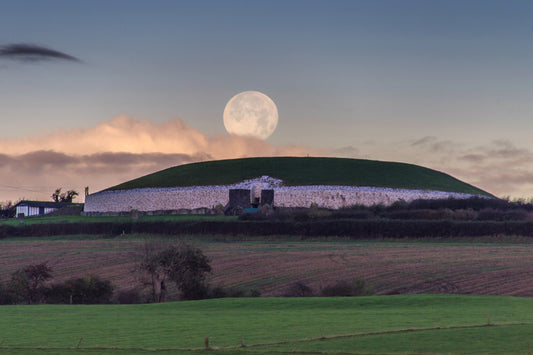
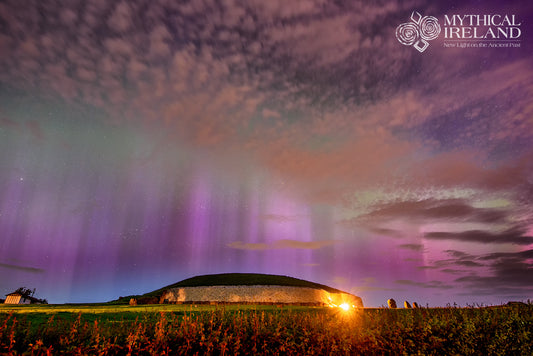
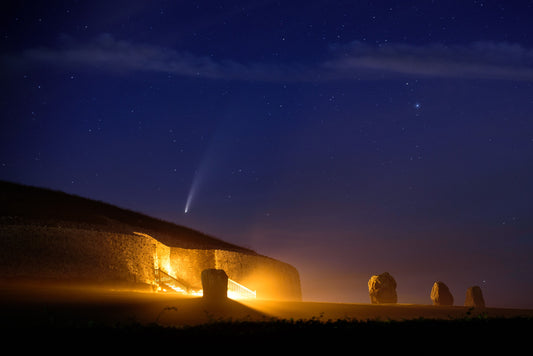

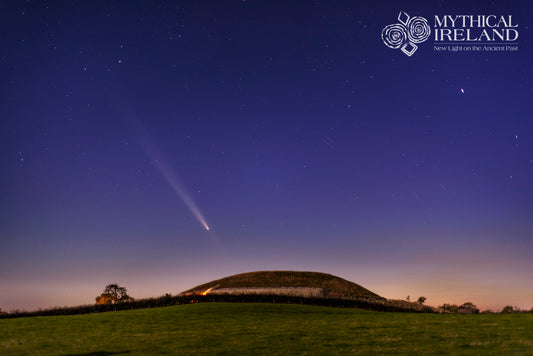
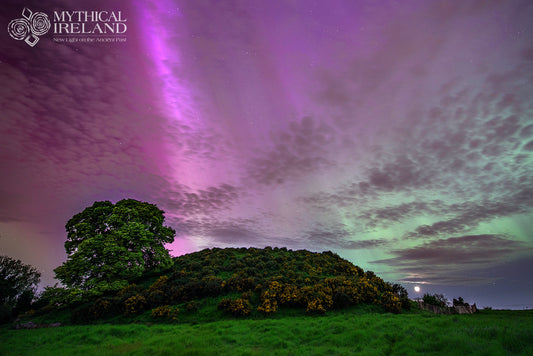
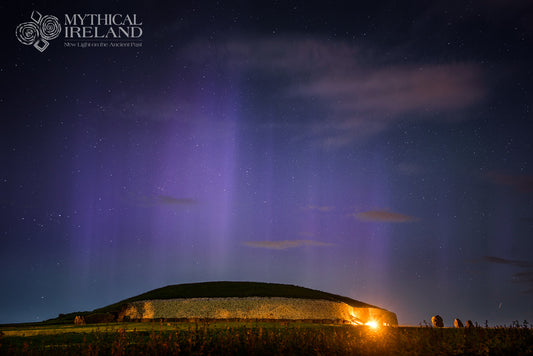
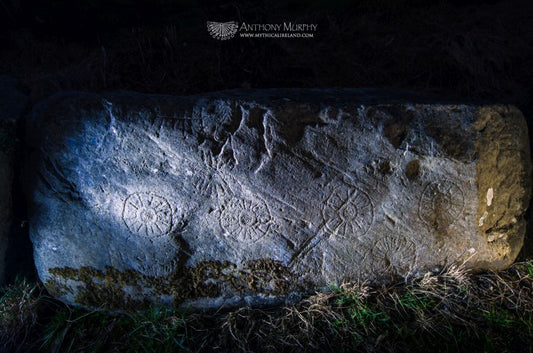
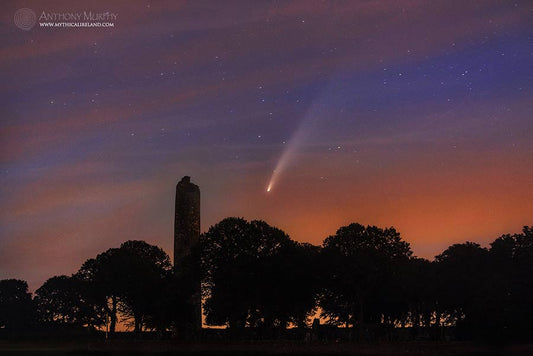
2 comments
Thank you for this site. We are coming over to Ireland for solstice and found this very useful
stunning photography, excellent research. thank you for posting.